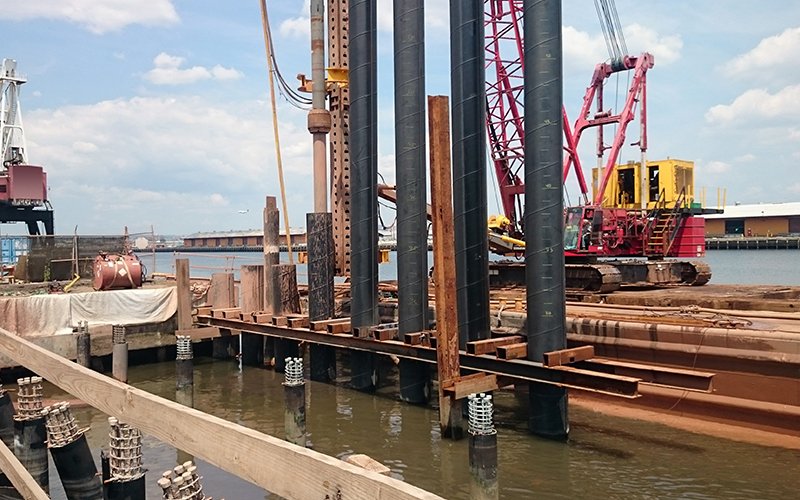Piling
Piling has emerged as an essential method in modern construction, thanks to the constant urbanization and increasingly more dense habitation in the past centuries. As almost all of the most usable ground has already been built on or otherwise utilized, what remains for the new building foundations is the softer and less stable soil. This kind of soil requires the application of a stabilizing technique before construction can be started.
One of such stabilizing techniques is piling, which involves drilling casing tubes into the ground, through the overburden, and into the solid bedrock below. Once the drill reaches the bedrock, the casing is, in most cases, left behind to support the structure while the drill and the drill bit are removed from the hole. The hole is then filled with concrete.
Pile foundations are principally used to transfer the loads from superstructures through weak, compressible strata, soft soil, or even water, onto stronger, more compact and thus less compressible as well as stiffer soil or rock at depth. This helps increase the effective size of a foundation, dividing the burden placed on it more evenly and resisting horizontal loads. They are typically used for large structures, and in situations where soil is not suitable, to prevent excessive settlement.
Drilled piles made with Robit® Casing Systems have significant advantages compared with other piling methods and systems. These benefits include fast drilling with maximum straightness of the hole, reliability to reach the targeted depth, and extreme simplicity of use.
If you would like to read more about drilling methods for deep foundations, check out this useful site by LIEBHERR.
Robit® Casing Systems mostly used in piling are DTH Prime, DTH SR, and Steel Fist.
For more Robit drilling consumables, please visit our Products page.
Browse products